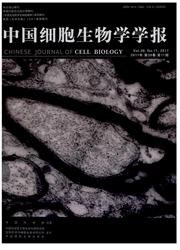

 中文摘要:
中文摘要:
为从分子水平研究肠型脂肪酸结合蛋白基因(intestines fatty acid-binding protein,IFABP)在鱼类脂代谢中的作用,该研究克隆并获得了1 362 bp大黄鱼I-FABPb基因序列,采用实时荧光定量PCR技术检测了I-FABPb基因在肌肉、肝、肠、胃、性腺、鳃、脑和心脏等8个不同组织中的表达情况,研究了饥饿和复投喂对大黄鱼I-FABPb基因在肠、肌肉和肝中表达的影响。结果显示,I-FABPb基因在8个被检测组织中均有表达,但在肠中表达量最高。饥饿对大黄鱼肠、肌肉和肝中I-FABPb基因表达影响显著,均呈现了先上升后下降的趋势,但在肠中变化最显著;长期饥饿后复投喂,I-FABPb基因在肠、肌肉和肝中的表达量均显著升高(P〈0.05),且显著高于饥饿0 d的水平(P〈0.05)。结果表明,饥饿及复投喂明显影响大黄鱼的脂肪代谢,I-FABPb在肠道脂肪代谢中起重要作用。
 英文摘要:
英文摘要:
To study the role and its molecular mechanism of intestines fatty acid-binding protein gene(IFABP) in teleost lipid metabolism, 1 362 bp I-FABP gene was cloned from large yellow croaker intestines tissue. I-FABPb expression was detected in muscle, liver, intestine, stomach, gonad, gill, brain and heart tissues by Realtime fluorescent quantitative PCR(q RT-PCR). The effects of fasting and re-feeding on the expression of I-FABPb in large yellow croaker intestines, muscle and liver tissues were also analyzed. Results showed that the large yellow croaker I-FABPb was widely expressed in all tested eight tissues, and most abundant in intestine tissue. Fasting had a significant influence on the expression of I-FABPb in large yellow croaker intestine, muscle and liver tissues, of which the most obvious influence was in intestine tissue. The expression of I-FABPb in all three tissues showed a same tendency, increase at first and then decrease(P〈0.05) during fasting. I-FABPb expression level significantly increased after re-feeding treatment(P〈0.05) in the three tissues, and also was significantly higher than the level of fasting 0 day(P〈0.05). It implied that fasting and re-feeding significantly affected fat metabolism in large yellow croaker, and I-FABPb played an important role in intestinal fat metabolism.
 同期刊论文项目
同期刊论文项目
 同项目期刊论文
同项目期刊论文
 Myostatin-2 Isolation and Spatio-Temporal Expression Comparison between Myostatin-1 and-2 inLarimich
Myostatin-2 Isolation and Spatio-Temporal Expression Comparison between Myostatin-1 and-2 inLarimich 期刊信息
期刊信息
